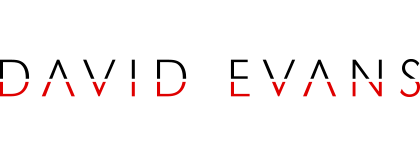by David Evans
Published August 15, 2023 in Escape & The Daily Telegraph – News Corp
Preparing for a King Crab safari in far northern Norway is a serious affair. Arctic suits are a must in this part of the world in winter, but what’s with the full-face helmets? I mean, how big ARE these crabs? It soon becomes apparent there’s nothing to worry about. The helmets are mandatory for the ride out to the frozen fjord on a snowmobile sled. Yes, you heard right. A frozen fjord.
So, how big are the crabs? Well, pretty big as it turns out – they have been known to grow to 28cm across the carapace (body) have a leg span of up to 1.8 metres and weigh as much as 12.7 kilograms.
The King Crab is pretty common around these parts but it wasn’t always so. Also known as the Northern Stone Crab or Lithodes Maja, they were introduced to the Murmansk Fjord by Russian scientists in the 60s with the aim to create a new industry. They quickly spread. Surprised Norwegian fisherman soon discovered the crabs snagged in their lines and nets and it didn’t take long before they realised the new population represented an opportunity. These days the crab can fetch up to $130 a kilo.
I’m at the Snow Hotel in Kirkenes in far northern Norway, the only hotel in the world completely made of snow and ice that is open for 365 days a year. Doesn’t it melt in summer, I hear you ask? Somewhat, is the answer, but it’s such a large mass of snow and ice that it doesn’t melt completely. Insulated covering helps preserve the structure like a wrapped Christo work of art until it’s topped up the following winter. There are also beautiful timber Gamme cabins to stay in, making the Snow Hotel an excellent base for year-round activities in the region, including the king crab safari.
Our safari day is sunny, cold and crisp, with a gentle breeze that’s more invigorating than uncomfortable, puffing sparkling icicles from the frozen trees into the air as we cruise along behind a snowmobile out onto the fjord.
We arrive at several large covered holes in the ice, straddled by timber frames. As our guide chats away about the crabs and their interesting history in the area, he chooses one of the holes, pulls the large cover away and proceeds to heave enthusiastically at a long rope disappearing into the dark, inky depths.
A large rectangular webbed crab pot appears from the icy slurry, and I pinch myself. I am crab fishing on a frozen fjord in the arctic! This is one item on my bucket list I didn’t know existed, but I am thankful for the unfolding experience. Definitely something to write home about. I look around to see everyone with phones and cameras out to record the unique event and I realise nobody actually writes home about anything anymore. They selfie and post.
The pot is very full. The crabs are quickly sorted and sized, with undersized crabs and females returned to the water before the remaining catch is humanely and very swiftly dispatched. Sorry boys!
Is this an all you can eat affair? Well, yes, but technically, no. There will be more than enough for lunch, says the guide, but there are strict bag limits – more to keep the black market under control and preserve minimum prices than to sustain the population which is considered by some Norwegians to be out of control.
On our return to the Snow Hotel, the crabs are boiled in large outdoor cauldrons for about 20 minutes before we feast inside the restaurant where the breathtaking fjord inlet view would have to be one of the finest in the world. A glass or two of Chardonnay completes the epicurean experience. We shuffle back to our stunning Gamme cabins for a couple of hours of crab-induced siesta, some chocolate and a good book.
Tips for the crab safari:
– when handling the crabs, wear the gloves provided so your own gloves don’t end up smelling like crab
– it isn’t strenuous – the crabs climb into the pot ahead of time
– camouflage is not required – it’s not that kind of safari
– the helmets are overkill, but safety comes first
– don’t eat breakfast beforehand, you will eat more crab than you have ever eaten in your life
I doubt the Norwegian Tourist Board would approve, but I think ‘Come and catch crabs in Norway’ would be a fantastic advertising campaign.

